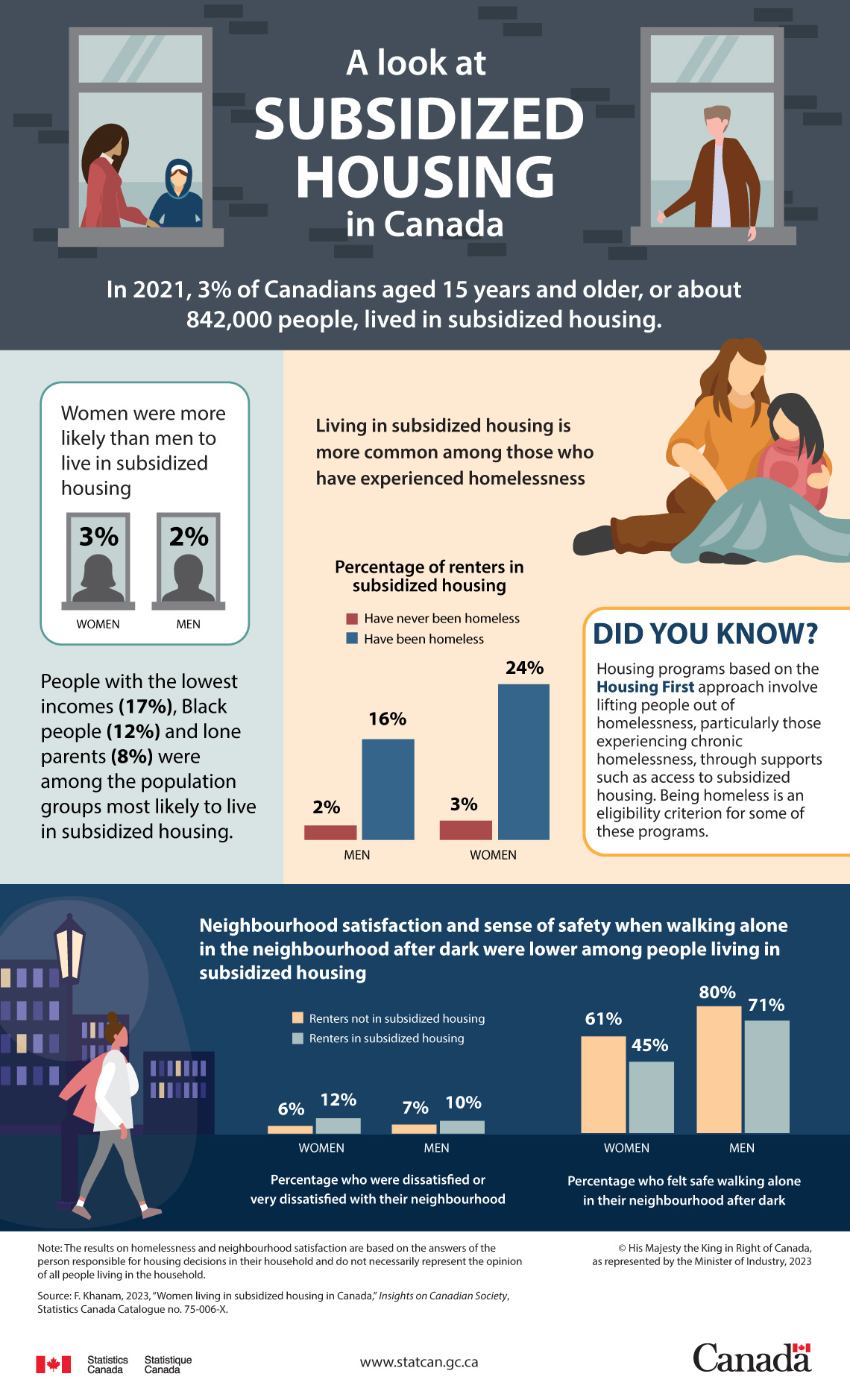A look at subsidized housing in Canada

Description: A look at subsidized housing in Canada
In 2021, 3% of Canadians aged 15 years and older, or about 842,000 people, lived in subsidized housing.
Women were more likely than men to live in subsidized housing (3% versus 2%)
People with the lowest incomes (17%), Black people (12%) and lone parents (8%) were among the population groups most likely to live in subsidized housing.
Living in subsidized housing is more common among those who have experienced homelessness
| Men | Women | |||
|---|---|---|---|---|
| Have never been homeless | Have been homeless | Have never been homeless | Have been homeless | |
| Percentage of renters in subsidized housing | 2% | 16% | 3% | 24% |
Did you know?
Housing programs based on the Housing First approach involve lifting people out of homelessness, particularly those experiencing chronic homelessness, through supports such as access to subsidized housing. Being homeless is an eligibility criterion for some of these programs.
Neighbourhood satisfaction and sense of safety when walking alone in the neighbourhood after dark were lower among people living in subsidized housing
| Women | Men | |||
|---|---|---|---|---|
| Renters not in subsidized housing | Renters in subsidized housing | Renters not in subsidized housing | Renters in subsidized housing | |
| Percentage who were dissatisfied or very dissatisfied with their neighbourhood | 6% | 12% | 7% | 10% |
| Percentage who felt safe walking alone in their neighbourhood after dark | 61% | 45% | 80% | 71% |
Note: The results on homelessness and neighbourhood satisfaction are based on the answers of the person responsible for housing decisions in their household and do not necessarily represent the opinion of all people living in the household.
Source: F. Khanam, 2023, “Women living in subsidized housing in Canada,” Insights on Canadian Society, Statistics Canada Catalogue no. 75-006-X.
- Date modified: